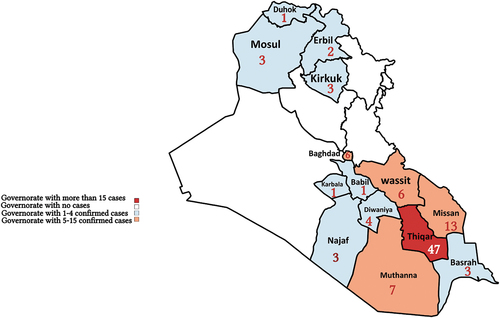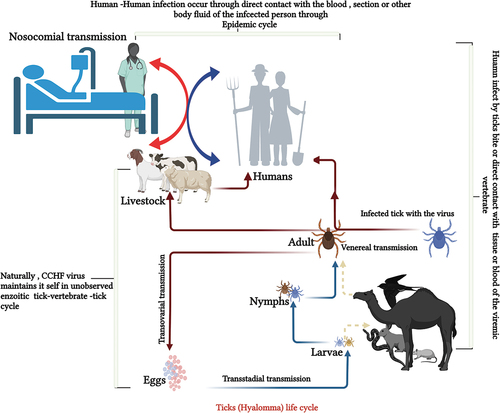Dear editor,
Emerging and reemerging zoonotic diseases are a significant public health concern globally. COVID-19‘s rapid spread has threatened human lives, disrupted livelihoods, impacted trade, the economy, and businesses all over the world, and put human healthcare services to the test. Governments have attempted to restricting the spread of the virus and mitigate the disease’s negative health outcomes through various policy measures such as restricting travel, imposing quarantines and lockdowns, and closing businesses and schools, in addition to allocating a large budget to the Ministry of Health.
The global impact on veterinary services and animal health cannot be ignored. According to the World Organization for Animal Health (OIE), each country must maintain national and regional veterinary regulatory and inspection services; food inspection and safety; emergency response; preventative measures such as vaccination against diseases with significant public health or economic impact; and priority research activities during the COVID-19 crisis. The strong reemergence of the Crimean-Congo hemorrhagic fever (CCHF) in Iraq has confirmed the suggestion of the COVID-19 pandemics’ short- and long-term effects, such as less zoonotic disease control and an increase in the negative impact on veterinary services and those working in the animal health sector, besides the trigger effects on the distribution and incidence of transmissible animal diseases, respectively.
CCHF or Nariovirus , a zoonotic tick-borne virus, which moves through the natural world in an enzootic cycle that involves ticks, vertebrates, and other ticks. The ticks of the genus Hyalomma serve as both reservoirs and vectors of the virus,Citation1 and transmission occurs through contact with the blood of the asymptomatic animals or human-human contact. The major complications of CCHF include rapid kidney deterioration, hepatitis and sudden liver failure or pulmonary failure, which may lead to death. In the first six months of 2022, there were 212 cases of the CCHFv infections in humans, according to data released by ministry of health in Iraq. It has been reported to the WHO by the Iraqi health authorities that the case fatality rate can go up to (30%), of which 170 (81%) were reported in April and May alone. Of those 212 cases, 118 were suspected, and 100 laboratories confirmed,Citation2 and Twenty-seven overall has been fatal,Citation3 including a woman in Baghdad, of which 14 were in laboratory-confirmed cases [case fatality ratio (CFR) 14%; 14/100]. Among the confirmed cases, most had direct contact with animals and were livestock breeders or butchers. Nearly 50% of confirmed cases (n = 47; 48%) were reported in Thiqar governorate, southeast Iraq, and the remainder were reported in other 14 different governorates (). The Kurdistan Region of Iraq was not free from the cases where three cases have been reported so far in Erbil governorate.Citation4
In previous years Iraq has recorded cases of the Crimean-Congo virus in previous years in many occasionslCitation5,Citation6 However, the surge in cases reported in the current year has caused concerns. During 41 years of CCHF in Iraq from (1978–2019) around 379 cases of infections were confirmed and 39 death, with an annual number of 9.2 cases. In contrast, there has been a sharp increase in infections within the first six months of 2022 compared to the earlier years. According to WHO representative in Iraq Ahmed Zouiten recently told AFP, the World Health Organization (WHO) believes that one reason for this surge is a result of the lack of livestock treatment for external parasites in the past two years in Iraq because of measures taken against COVID-19.Citation7 However, the elevation was recorded in 2021 and suggested a warning of the situation.Citation5
The sharp increase in infections is in line with the increase in the slaughter of animals and more contact with meat due to the holy months Ramadan and Eid al-Fitr (Festival of Breaking Fast), and there are fears of an increase in cases during Eid al-Adha (Festival of Sacrifice). Even though there is an arrangement made by the municipalities of the capital and large cities, in coordination with the Veterinary Organization, for slaughtering based on standard protocols, there is still slaughtering that takes place in villages or small towns without the existence of veterinary experts and meat inspectors. In rural areas and smaller cities, animal purchase and sale regulations were during Eid al-Adha’s time. As a result, locals are more likely to buy and sell cattle directly with one another. This means that the transportation, marketing, and slaughtering of animals occurs outside of the jurisdiction of veterinary authorities, which can put people in danger of obtaining zoonotic diseases in locations where they are common. For these reasons, it is suggested that during Eid al-Adha, each village or small town should take the required preventive procedures to avoid exposure to animals and fresh meat from animals suspected of being virus carriers and perform slaughtering process at specialized slaughter houses and examined by meat inspectors. This is of utmost significance procedure required in the villages and smaller towns close to Iraq’s borders, where animal trafficking with Iraq’s neighbors is most prevalent. In addition, it’s essential to understand the transmission and ticks cycle because the virus can be transmitted sexually between ticks during mating (venereal transmission), and transovarial, from infected females to their offspring. The vertical (transovarial) transmission could provide a vital amplification mechanism if the virus is transmitted from infected to uninfected larvae co-feeding on the same host. One of the critical factors that helps the virus to survive is the ability of the Hyalomma species to survive at least 800 days without a blood meal, which indicates the tick’s reservoirs for the virus (). At the meantime, there is no safe and effective vaccine available against this virus for human and animal use. Therefore, the only way to control the emergence of the virus is through external parasitic treatments against ticks, awareness, and safe slaughtering procedures at authorized slaughterhouses.Citation8
In conclusion, the Coronavirus has an immediate impact on human health, but it is not the only infectious agent that poses a risk to people’s wellbeing. The Coronavirus was like a Trojan horse that kept governments preoccupied with it and paved the way for other diseases. The pandemic consequences of the COVID-19 have already been felt and confirmed, such as its effect on the rates of immunizations globallyCitation9 or out-breaking and reemerging of other diseases like as monkeypoxCitation10 and CCHFV. It is not too late to develop more effective and comprehensive plans to reduce the emergence of fatal diseases specially in developing countries. COVID-19 continued its spreading globally and the complicated life span of the virus and tick’s roles will give a chance of the virus to reemergence again. Therefore, well-thought-out and more comprehensive plans will have a significant impact, especially in cases of Crimean-Congo hemorrhagic fever, because the infections was reduced through spraying and killing ticks, which thus will reduce the chance of the virus surviving in tick store
Disclosure statement
No potential conflict of interest was reported by the author(s).
Additional information
Funding
References
- Messina JP, Pigott DM, Golding N, Duda KA, Brownstein JS, Weiss DJ, Gibson H, Robinson TP, Gilbert M, William Wint GR, et al. The global distribution of Crimean-Congo hemorrhagic fever. Trans R Soc Trop Med Hyg. 2015;109(8):1–3. doi:10.1093/trstmh/trv050.
- https://www.kurdistan24.net/en/story/28533-Iraq-has-recorded-over-100-cases-of-Crimean-Congo-fever,-20-deaths:-Ministry%C2%A0.
- HPS Website - CCHF in Iraq. https://www.hps.scot.nhs.uk/publications/hps-weekly-report/volume-56/issue-24/cchf-in-iraq/.
- Iraq: 1st Crimean-Congo hemorrhagic fever case reported in Erbil - Outbreak News Today. http://outbreaknewstoday.com/iraq-1st-crimean-congo-hemorrhagic-fever-case-reported-in-erbil-85476/.
- WHO EMRO | Weekly Epidemiological Monitor 2021 | Information resources | Epidemic and pandemic diseases. http://www.emro.who.int/pandemic-epidemic-diseases/information-resources/weekly-epidemiological-monitor-2021.html.
- Aziz TA, Ali DJ, Jaff DO. Molecular and serological detection of Crimean-Congo hemorrhagic fever virus in sulaimani province, Iraq. J Biosci Med. 2016;4(4):36–42. doi:10.4236/jbm.2016.44006.
- WHO EMRO | Early COVID-19 preparation saved lives in Iraq | News | Iraq site. http://www.emro.who.int/iraq/news/early-covid-19-preparation-saved-lives-in-iraq.html.
- Sorvillo TE, Rodriguez SE, Hudson P, Carey M, Rodriguez LL, Spiropoulou CF, Bird BH, Spengler JR, Bente DA. Towards a sustainable one health approach to Crimean–Congo hemorrhagic fever prevention: focus areas and gaps in knowledge. Trop Med Infect Dis. 2020;5(3):113. doi:10.3390/tropicalmed5030113.
- Causey K, Fullman N, Sorensen RJ, Galles NC, Zheng P, Aravkin A, Danovaro-Holliday MC, Martinez-Piedra R, Sodha SV, Velandia-González MP, et al. Estimating global and regional disruptions to routine childhood vaccine coverage during the COVID-19 pandemic in 2020: a modelling study. Lancet. 2021;398(10299):522–34. doi:10.1016/S0140-6736(21)01337-4.
- Monkeypox. https://www.who.int/europe/emergencies/situations/monkeypox.


